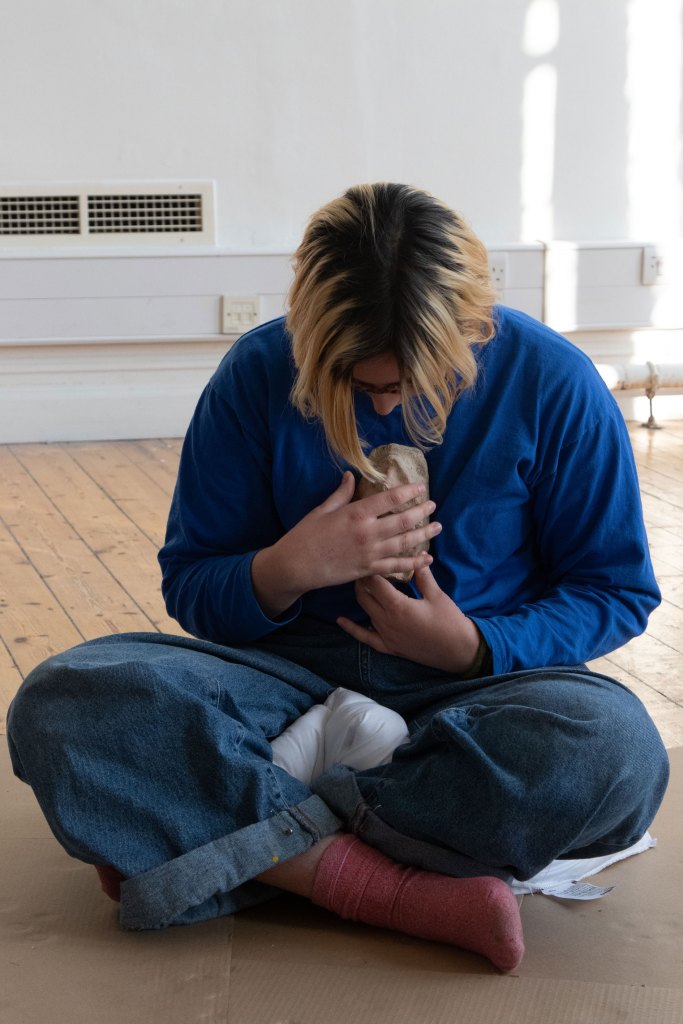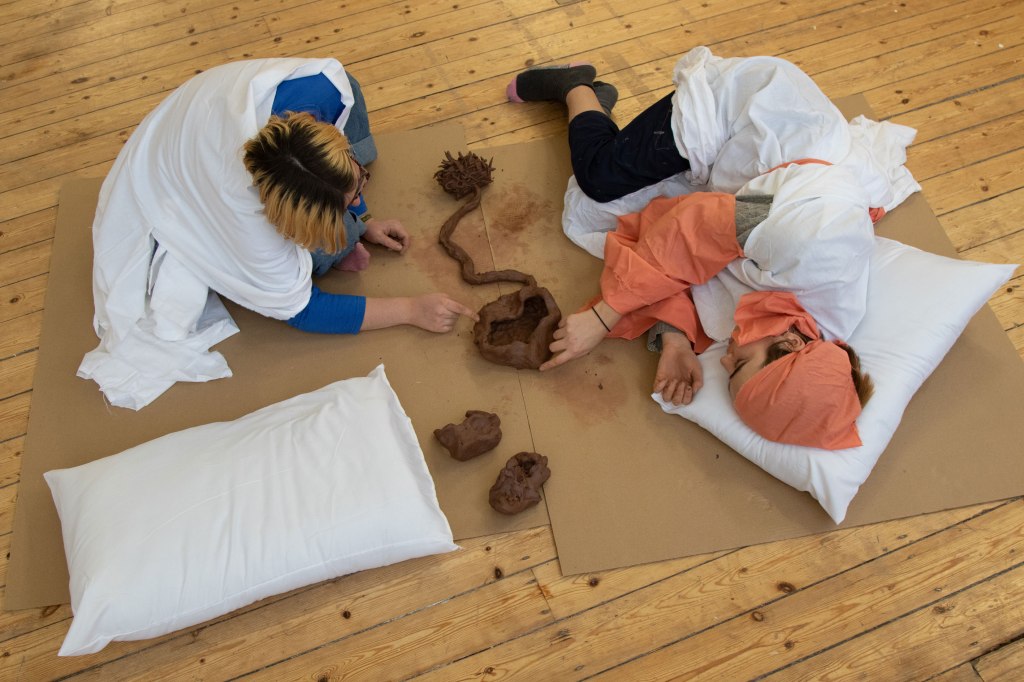Last year, Dr Sally Waite (Senior Lecturer in Classical Archaeology) and Dr Olivia Turner (artist and postdoctoral researcher) at Newcastle University shared with The Votives Project their short film The Way My Body Feels (2022). This showcased some of the work they had been doing with experimental workshops as part of their project on Corporeal Pedagogies, which considered the links between objects, art, and medicine. Object handling sessions involving an ancient terracotta votive womb from The Shefton Collection were central to the project’s workshops, prompting students to explore ancient and contemporary notions of the body and embodiment. We are delighted to now share news of the publication of the project:
Turner, O. and Waite, S. (2023). ‘Corporeal pedagogy: Visualizing anatomy through art, archaeology, and Medicine’, in L. Shapiro (ed) Graphic medicine, humanizing healthcare and novel approaches in anatomical education. Biomedical visualization, vol 3, pp. 231–249. Available at: https://doi.org/10.1007/978-3-031-39035-7_11
Olivia and Sally have kindly allowed us to share here some quotations and images from their excellent chapter, which is definitely worth reading in its entirety!
“The history of medicine is contextually important in understanding how our contemporary knowledge of the body has been shaped by the past. Medical practices and ideologies in ancient Greece have been foundational for contemporary Western medicine (Ackerknecht 1982; Temkin 1991; Nutton 1997; Jotterand 2005). As such, Corporeal Pedagogy uses objects from antiquity that are associated with illness, disease, and healing practices, in workshops for higher education teaching settings. At the heart of The Way My Body Feels was an anatomical votive artifact from the Shefton Collection of Greek Art and Archaeology.
Today, medical training, education, and research visualize the inside of the body through surgery, dissection, and imaging techniques. These are methods that see the body from the outside in, whereas anatomical votives visualize and make sense of the body, physically and psychologically, from the inside out. Little critical attention had been paid to anatomical votives, within previous archaeological scholarship, until the international research group titled, The Votives Project (2016), pioneered by Jessica Hughes and Emma Jayne Graham, which brought focused attention and study to these artifacts. This Corporeal Pedagogy project contributed to this growing body of research through a public exhibition and short film (Turner and Waite 2022). However, the relationship between contemporary art, anatomical votives, and the visceral body in medicine remains largely unexplored. Corporeal Pedagogy was devised as a methodology to explore these ideas of the imagined and real visceral body in medicine. It considers alternative ways of imagining, visualizing, and experiencing the visceral body, and how these can change through circumstances of transition, illness, and disease.”
Turner and Waite 2023, p.232

Participant holding the Shefton Collection votive | Photography by Janina Sabaliauskaite (Turner and Waite 2023 Fig. 11.7)
“The focus on votive uteri and their importance in terms of how the past informs present ideologies, practices, and experiences in medicine is of critical pertinence particularly as the majority of the workshop participants self-identified as women or non-binary. As commented by Brandy Schillace, editor-in-chief for the British Medical Journal: Medical Humanities, “This is timely. I’m here in the United States, and as everybody knows, the Supreme Court has just overturned Roe versus Wade, meaning that a lot of autonomy [people] have had over their own uteruses has been lost… the fact that the focus piece of your [project] is a votive uterus has perhaps even greater meaning for me now than it did prior” (2022). The significance of Corporeal Pedagogy and The Way My Body Feels not only has positive implications for anatomical teaching and learning environments, but also for issues relating to social justice, bodily autonomy for the medicalized body, and gender studies. Elinor Cleghorn in her book Unwell Women (2021), used as part of the workshop readings, writes, “The lives of unwell women depend on medicine learning to listen.” Therefore, Corporeal Pedagogy and The Way My Body Feels provide spaces to listen, not only to our bodies but also to each other, history, and archaeological collections.”
(Turner and Waite 2023, p. 247)



